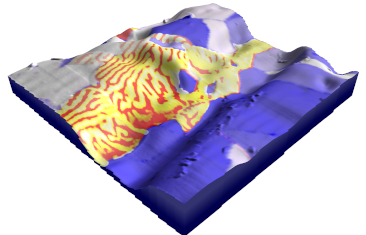Ergo: The Future of AFM Control
Ergo is the new advanced software platform included with all Asylum Research Cypher and Jupiter XR Atomic Force Microscopes (AFM’s). A streamlined workflow enables quick, efficient setup and simple, intuitive data acquisition for consistent high-quality images. Ergo enables users to complete measurements and confidently draw meaningful conclusions quickly and efficiently.

New Relate Software for Correlative Imaging with Atomic Force Microscopy and Electron Microscopy
June 10, 2020 (Santa Barbara, CA). Oxford Instruments Asylum Research is pleased to announce the release of the new “Relate” software package for correlative imaging with Asylum Research AFMs, electron microscopes, and Oxford Instruments NanoAnalysis EDS and EBSD detectors. The Relate software makes it simple to correlate, visualise, and analyse the multitude of image data types generated by these techniques. Correlative imaging enables scientists and engineers to realise the combined insights provided by these techniques for applications including semiconductors, metallurgy, and energy storage and generation materials.
“It is obvious that the elemental composition information from EDS and the crystallographic data from EBSD can complement the nanoscale structural, electrical, mechanical, and functional information that is generated by Asylum Research AFMs,” explained Dr. Roger Proksch, Group Technology Officer for Oxford Instruments. “But it has been difficult to take advantage of these synergies because the data is collected in slightly different regions of the sample and in different data formats. The Relate software solves those problems, making it far easier to correlate and analyse these complementary datasets.”
The Relate software works by importing data files in the native formats used by Asylum Research AFMs and Oxford Instruments NanoAnalysis EDS and EBSD detectors. Though one can closely match the area inspected by the different techniques, there will always be some mismatch in the position, scale, and rotation of these datasets. Relate allows the user to readily correlate data from the same region of interest and prepare composite 2D and 3D images. Most importantly, unlike simplistic image overlays, the underlying data structure of each layer is maintained by Relate. This enables not just visualisation, but true quantitative analysis of the combined datasets.
For more information see https://afm.oxinst.com/Relate

